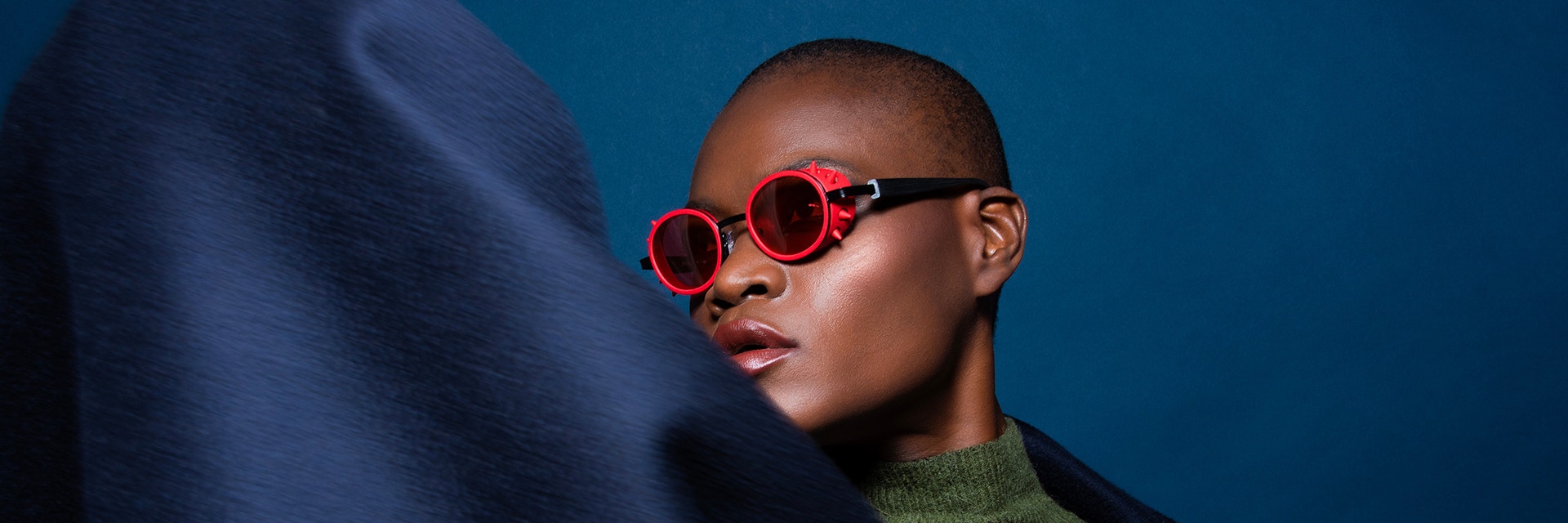CASE STUDY
Materials and Mindsets: A Beautiful Blend for Sustainable Eyewear and for JF Rey
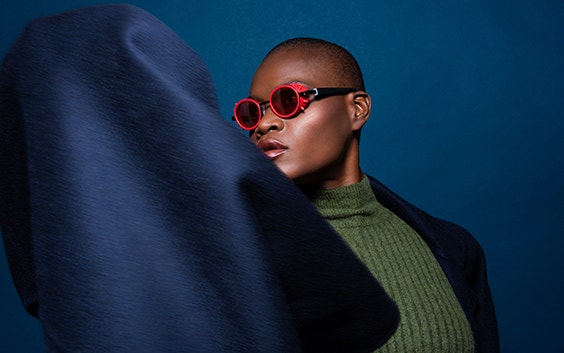
Jules Verne can take some credit for JF Rey’s recent ‘Nautinew’ creation. The ground-breaking design of his famous NAUTILUS submarine heavily influenced the collection’s imaginative name. But the true inspiration behind this innovative eyewear concept is 3D printing. More specifically, a desire from brand founder Jean-François Rey and his design team to see what creative and commercial potential could be unlocked by mixing 3D-printed parts with traditionally crafted materials. Materialise helped them to find out.
For leading French eyewear design house JF Rey, 3D printing is nothing new. The design team, in particular Head Designer Olivier Mollard, has been using the technology to prototype for some time. “For me,” Olivier explains, “3D printing is an incredibly powerful tool. Being able to physically realize creative inspiration, to tangibly see how they look and feel, can have such a big impact on the design process.
“On paper, and even on screen with 3D digital renderings, you can see how a design should look. Holding it in your hands and seeing how it rests on the face, you can go ‘yes, that’s the one!’.”
Which is exactly how Nautinew, JF Rey’s first step beyond prototyping and into commercial production, began.
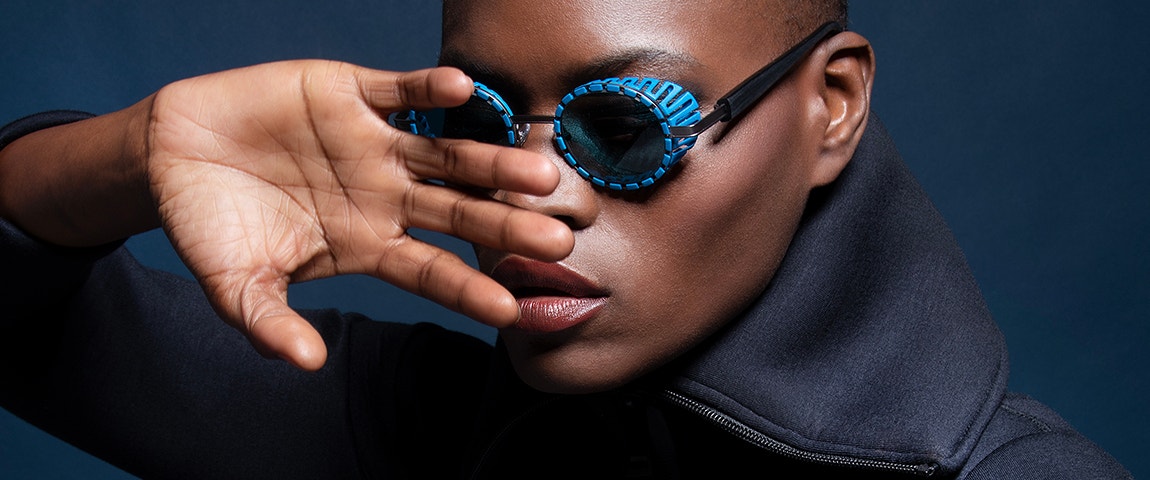

When creativity and sustainability come together
It all started when Jean-François Rey posed a creative challenge to his talented team. He asked them to put forward innovative concepts that leveraged the materials and design freedoms available through 3D printing, with the traditional techniques and metals famously used by the brand for decades.
Olivier recalls, “I developed several imaginative proposals and, using our in-house facilities, we were able to print polyamide prototypes to discuss and present to the sales team for feedback before finally narrowing our choices down to the perfect one.” This “one” became the Nautinew concept, a visually exciting and seamless blend of contrasting geometries and materials.

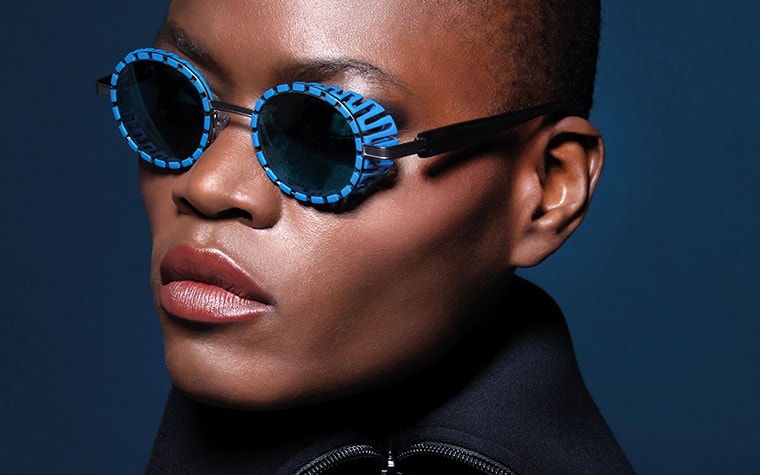

The chosen concept was also hugely exciting for another important reason — its clever and highly sustainable use of materials. “It’s not our desire to re-invent what we do here at JF Rey, to swap one production technique for another,” explains Jean-François. “It is our desire to push boundaries. Not just in terms of innovation, creativity, and craftsmanship but also in how we optimize materials and resources. We want to launch imaginative eyewear that has sustainability and social responsibility designed into its DNA.
“The Nautinew concept we developed is a great example of this,” adds Jean-François. “It pairs a frame structure already in stock with a polyamide 3D-printed shell, the combination of contrasting but complementary shapes and structures evolving into something entirely new. The transformative nature of 3D printing has a lot to offer in this respect. With 3D-printed components, you have the ability to adjust digitally, prototype, and print exactly what you need, finished the way your designers have imagined it — all with minimal waste.”
From concept to commercial reality
With the concept chosen, JF Rey set about collaborating with their preferred 3D printing partner, Materialise, to bring this innovative idea to life. To make it a commercial reality.
“I have a background in engineering and design and also studied 3D printing many years ago,” explains Olivier, “so I have a good understanding of the tolerances and precision you need. But what’s great about working with Materialise is that they also put their in-depth knowledge on the table. When I sent over our proposed Nautinew file, we quickly received recommendations back from a technical perspective, with advice on adjustments that could help further optimize design for the print process. It’s a very collaborative way of working. A mix of skills and mindsets.”
With the design finalized, Materialise printed and supplied samples for test assembly and validation at JF Rey’s manufacturing facility in France. Olivier adds, “it was a really quick process. With 3D printing you win time so that you can really focus on fine-tuning the technical aspects and perfecting the end result.”
“It’s not our desire to re-invent what we do here at JF Rey. It is our desire to push boundaries. We want to launch imaginative eyewear that has sustainability and social responsibility designed into its DNA. ”
— Jean-François Rey, Brand Founder of JF Rey and CEO of Maison Jean-François Rey
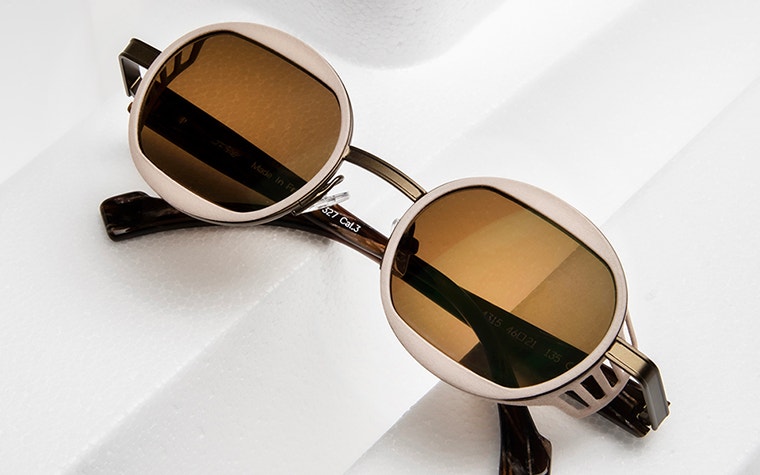

The next step, Nautinew, and beyond
With the initial Nautinew concept launched and receiving strong critical and commercial acclaim, the decision to add more models to the range was an easy one for JF Rey to make. “When you can develop, test, and launch models so quickly, it would be foolish not to take advantage of the huge opportunity this presents,” comments Jean-François.
Two new models in the Nautinew range — ‘New Black’ and ‘Black Storm’ — experiment with color and form, from offering a cool, modern twist on traditional lace to harnessing bold uses of space and emerging spike formations. “We’ve developed something really unique,” adds Jean-François, “once again by mixing not just materials but also different mindsets — technical and creative, traditional and experimental, Materialise’s thinking and ours. Mixing the knowledge and experience in both teams works really well.”
In addition to expanding the Nautinew model range, the JF Rey team is also working on a new ‘In and Out’ concept, which is, as Olivier explains, designed to leverage the flexibility of 3D printing to maximum effect.
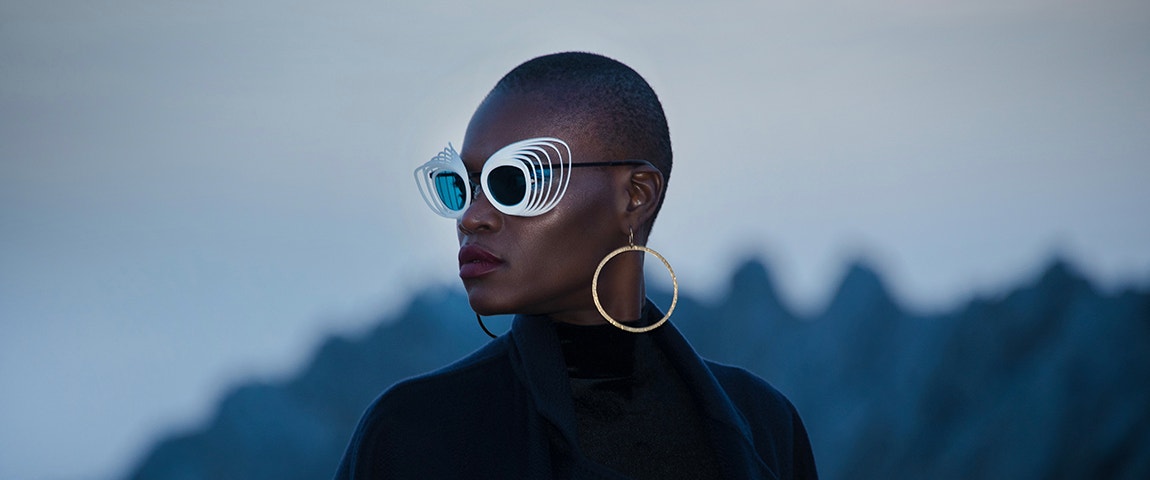
“Working with the Materialise guys, we’re building a range of models that go from traditional chic to full force extravagance. I think with 3D printing in eyewear, you can really tell a story in this respect. You have the flexibility to utilize the design freedoms, textures, colors, and finishes available in different ways — for example, some of the models in this range feature an amazing finish, a kind of organic porosity, that you could only get using 3D printing.
For everyone at JF Rey, 3D printing has proven it deserves a spot in the product portfolio. Crucially, it’s also helping to reinforce what the brand stands for. Olivier adds, “As an eyewear designer, 3D printing really breathes fresh air into your thinking. Working for a brand known for its continuous creativity and ability to push boundaries, what could be better than that?”
Share on:
This case study in a few words
JF Rey
Eyewear
Rapid prototyping
Serial 3D printing production
Polyamide
Product innovation
